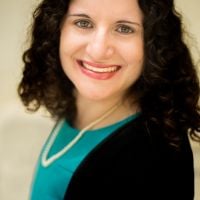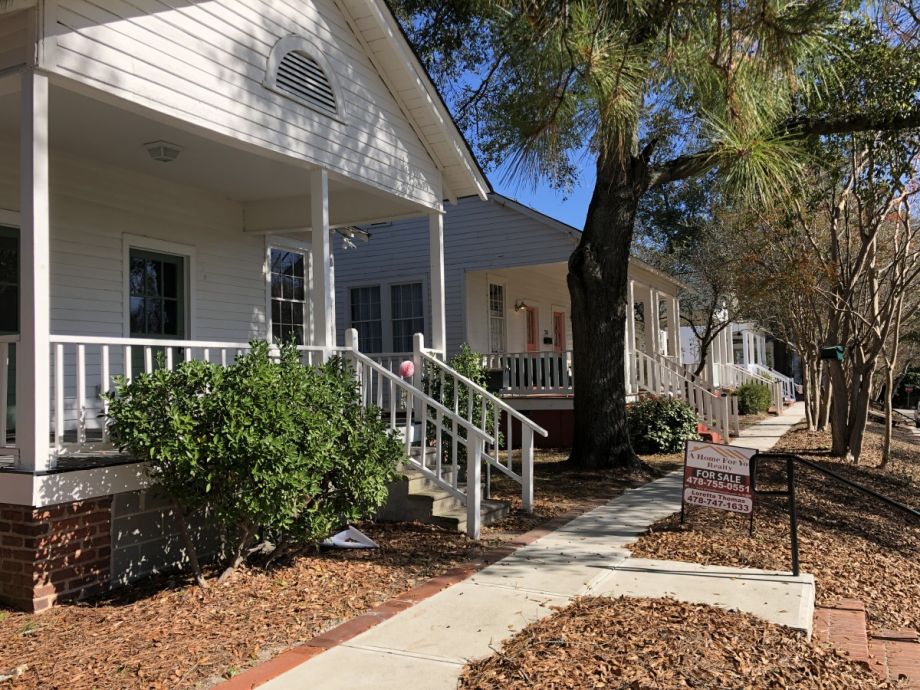Fort Hawkins — one of the oldest neighborhoods in Macon, Georgia — was long a community for people working in the nearby textile mill until it fell into decline. Now, a local group is hoping to support the neighborhood with a new artist village.
It all started with Ocmulgee Mounds National Historical Park, a site that has been inhabited by indigenous groups for 17,000 years. The Mississippian people built elaborate mounds around 900 CE that still stand today and have become a source of sightseeing.
These mounds also happen to be minutes from downtown Macon.
There is an effort to make Ocmulgee into a national park, a first for the state. (Georgia has a number of National Park Service-recognized monuments, historic sites and battlefields, but no official national parks.) That caused the Macon-Bibb Urban Development Authority, a group of county-appointed experts, to turn its eye toward developing an existing entrance to the park that lies in the Fort Hawkins neighborhood.
But Fort Hawkins has more than an entrance to Ocmulgee. It’s also a historic Eastern Macon neighborhood that is majority Black.
That’s when Macon Arts Alliance stepped in and began considering the future of Fort Hawkins. The disinvested neighborhood’s parcels are 48 percent unoccupied, according to a 2017 city mapping effort.
“What Macon Arts Alliance said was, ‘I think we need to put some protections in place to help preserve the character of this neighborhood,’” says J.R. Olive, project director at Mill Hill artist village. “If the efforts of [the the Macon-Bibb Urban Development Authority] are successful and the national monument becomes more popular and starts getting more visitors, the value of that land is going to change and the use might change.”
Meanwhile, downtown Macon is becoming less affordable for artists. This gave Macon Arts Alliance an idea: Create a place in the city’s urban core with affordable housing for artists. Having that place in Fort Hawkins would also bring attention to the neighborhood.
That idea led to Mill Hill, an artist village spearheaded by the Macon-Bibb Urban Development Authority, Macon Arts Alliance and the Historic Macon Foundation. Mill Hill has worked with existing Fort Hawkins residents to help guide the project.
For the first part of its history, Fort Hawkins had a textile mill where people worked. Those jobs went overseas in the 1960s, and the mill started offloading massive amounts of property, Olive says. Two major roads were built, cutting off cross streets and separating the neighborhood from the rest of Macon.
When the project first began, the people behind what would become Mill Hill worked with the local Roving Listeners group. They went door to door in 2015 for six months, getting stories from people. This included talking with people at Davis Homes, a 184-unit public housing development down the street from Mill Hill.
“We weren’t even talking about a forthcoming project,” Olive says. “It’s pretty common for development projects to go in and say, ‘We’re going to do this planning effort. We’re going to have community meetings. We’re going to do this.’ And it’s all sort of framed around ‘because we’re going to do this project in the future.’ And really, with the Roving Listeners phase, it wasn’t through any lens. It was just knocking on people’s doors.”
They recorded people’s stories and compiled some of them along with photos in a book called “Heard on the East Side,” distributing it to residents. They also referred back to those conversations when creating the Mill Hill master plan, which was completed in 2018.
Now, Mill Hill has 11 historic cottages in its artist village, including seven that have been restored. (The Macon-Bibb Urban Development Authority funds the restoration of the cottages and has worked with general contractors including the nonprofit Historic Macon Foundation.) One of those homes was bought by an artist, one is owned by Macon Arts Alliance for an artist-in-residence, and the rest are on the market. Mill Hill also restored a 1920s auditorium into a community arts center.
Karen Dargan Middleton, chief of resident initiatives at the Macon Housing Authority, served on the Mill Hill steering committee in 2015-2018.
“The whole thing was about blight and getting rid of the blight, especially with East Macon being the birthplace of Macon, Georgia,” Middleton says. Restoring the community center and bringing housing to the neighborhood has been positive, she says.
Mill Hill also offers programming and facilities. The Bakers Collective is a shared bakery kitchen space in the community center that people can use for a fee. Five full-time bakers use the space, with slots also available for hourly hobby bakers. The Bakers Collective grew out of neighborhood feedback. Many people said their creative outlet was food-related, and some were operating food businesses out of their homes.
There’s also the Tech Toolshed, a resource center with tools and equipment for filmmakers, photographers, designers and artists who use technology for their work.
Olive says programming is usually shaped by available grant funding and partnering artists or instructors. In the past, Mill Hill has offered knitting and sewing, ballet for kids, creative writing, painting and clay sculpting. Many of these programs were done as part of artist residences and were free of charge to attendees.
Now, Mill Hill is working on building green space for Fort Hawkins. It acquired properties to build a linear park stretching from the community arts center to a major road. Phase one was clearing that of overgrowth. Next up is using a sales tax or other funding to install amenities.
For that, Mill Hill asked residents what they want. A church suggested a soccer field, and that’s now part of the plan.
Gentrification is always a concern with revitalization efforts in a historically disinvested neighborhood. Mill Hill established a community land trust to keep prices affordable for its block of houses, but that still leaves the rest of Fort Hawkins.
Olive says he doesn’t think Mill Hill will adversely affect rental prices.
“We have certainly added value to the area,” he says. “But the problems in the neighborhood outside of where we have been working are pretty significant… It’s something that we’re certainly concerned about and certainly looking at, but it’s not an issue at this point. The properties outside of the [community land trust], we have no way of controlling them at this point.”
Of course, the long-term effects of Mill Hill remain to be seen. So far, only one house of the seven restored cottages is occupied. Macon Arts Alliance has shown the houses to the local artist community on an individual basis. But Olive says one of the main reasons that the cottages have been slow to sell is there hasn’t been a large marketing effort by the Macon-Bibb Urban Development Authority, the coordinator of the real estate development. In addition, he says many first-time homebuyers are unfamiliar with the concept of a community land trust.
But meanwhile, Fort Hawkins looks better and more well-maintained, Middleton says. There’s the greenspace, plus the program installed a needed traffic light on a nearby road. There are also fewer dilapidated houses.
Still, involving neighborhood residents is crucial.
“Anything that has revitalization effort is a positive thing,” Middleton says. “But how it involves the actual residents in the community is as important.”
This article is part of “For Whom, By Whom,” a series of articles about how creative placemaking can expand opportunities for low-income people living in disinvested communities. This series is generously underwritten by the Kresge Foundation.

Adina Solomon is a freelance journalist based in Atlanta. She writes on a range of topics with specialties in city design, business and death. Her work has appeared in The Washington Post, CityLab, U.S. News & World Report, and other national and local outlets.








